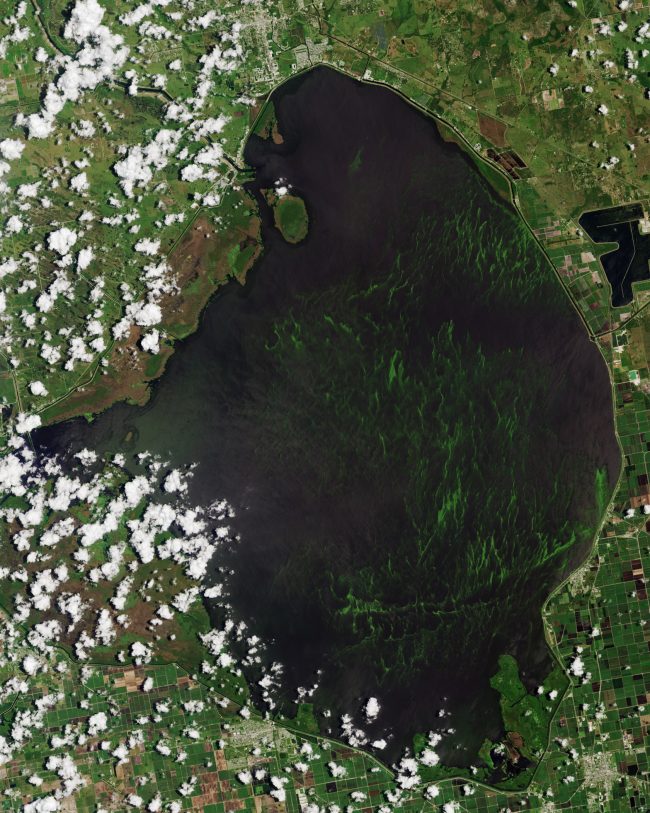
NASA published this original story on July 15, 2023. Edits by EarthSky.
Algae bloom spreads over Lake Okeechobee
Algae have covered about half of Lake Okeechobee – Florida’s largest freshwater lake – for much of June and early July 2023. The algae bloom led to the closure of parts of a marina and health warnings in neighboring counties.
Swirls and tendrils of blue-green algae appear in the image above. The Operational Land Imager-2 (OLI-2) on Landsat 9 acquired the image on June 12, 2023. Around that time, a NOAA analysis of Copernicus Sentinel-3 satellite data indicated that algae blooms covered about 380 square miles (980 square kilometers) of the lake. That equates to more than half the area of the lake.
Are the algae harmful?
Blue-green algae, also known as cyanobacteria, are single-celled organisms that rely on photosynthesis to turn sunlight into food. The bacteria grow swiftly when nutrients like phosphorus and nitrogen are abundant in still water. The bloom pictured here may contain blue-green algae, as well as other types of phytoplankton. Only a surface sample can confirm the exact composition of a bloom. Some cyanobacteria produce microcystin: a potent toxin that can irritate the skin and cause liver and kidney damage.
Scientists found microcystin in water samples they took from the lake on June 17. They also found microcystin near the floodgate and canal that releases water into the St. Lucie Estuary on Florida’s southeastern coast. Excess lake water typically gets released into the estuary and into farmlands to the south. But in mid-June, amid high lake levels, water managers prevented discharge because of the presence of harmful algae, according to the Miami Herald.
The Florida Department of Health in Lee, Martin, and Palm Beach counties issued public health warnings in late June and early July. It cautioned residents not to swim or boat in the lake due to the presence of harmful algal toxins. The harmful bloom grew to cover 420 square miles (1,088 square kilometers) on July 4, and spanned 440 square miles (1,140 square kilometers) by July 11.
Bottom line: An algae bloom in Lake Okeechobee – Florida’s largest freshwater lake – covered more than half the lake in June and July.
Read more: Oceans turning greener due to global warming
The post Algae bloom covers half of Florida’s largest lake first appeared on EarthSky.
0 Commentaires